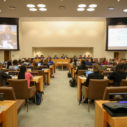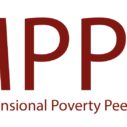
Search
Let’s Not Waste This Chance: Dynamic exchange at the UNGA on leadership and poverty amidst the COVID pandemic
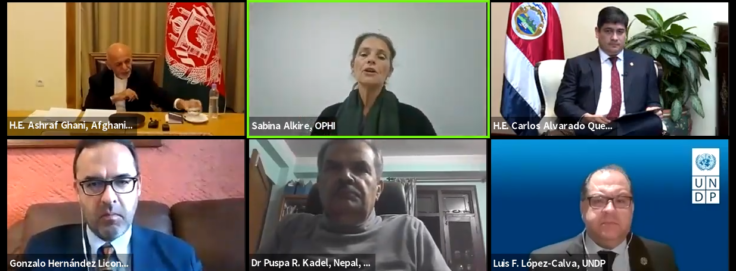
Concept Note for UNGA 75 side event
24 September 2020 – OPHI and the MPPN held an online Side Event at the 75th UN General Assembly yesterday for 21 world leaders and policymakers to discuss how to reduce poverty in the context of the COVID-19 crisis. The leaders’ attitude towards reducing poverty during the COVID-19 hyper-event and recession was well articulated by Pakistan’s Sania Nishtar: ‘Let’s not waste this chance’.
Six heads of state and government, one Vice-President, and 14 high-level representatives from countries and international agencies spoke at the event, which was co-hosted by the Governments of Chile and Pakistan and the United Nations Development Programme (UNDP) together with the MPPN and OPHI. The discussion entitled ‘Poverty at a Crossroad: Using Leadership and the Multidimensional Poverty Index to Build Back Better’ created a space to discuss the impact of COVID-19 on poverty around the world, and to share experiences of using multidimensional poverty indices (MPIs) to illuminate the way through the current crisis.
All speakers recognized the severe strain of the pandemic on their respective countries and the role of effective leadership in managing the way forward. The Prime Minister of Pakistan highlighted that while the virus may not discriminate, the poorest are the most adversely affected. The President of Chile described how the MPI is helping to monitor the risk of households to COVID through indicators like overcrowding, and discussed how the MPI is helping to track the impact of COVID on healthcare access. The President of Afghanistan reflected that the pandemic has opened a space for leaders to listen better and act quicker. The President of Honduras highlighted eight major poverty programmes which had been shaped by the Honduran MPI and now by the pandemic.
The President of Costa Rica noted how Costa Rica’s progress in reducing multidimensional poverty (in contrast to monetary poverty) had revealed the complexity of poverty to his government. Sharing his enthusiasm for the MPI, the Prime Minister of Nepal announced that Nepal will update its national MPI later this year and use the disaggregated data to understand where the poorest people were. The Vice-President of Ecuador viewed their four-dimensional MPI as a targeting tool that slowed down the damage to and sustained protection for the vulnerable during the pandemic.
In the Ministerial segment, the Minister of Social Development and Families in Chile traced the interlinkages of poverty visible through the Chilean MPI and the pressure points that COVID had exacted on households. The Special Assistant of the Prime Minister of Pakistan on Poverty Alleviation and Social Protection spoke of the way the crisis invites an ‘inflection point’ for public policy globally to reverse decades of neglect and sparse progress. She shared details of Pakistan’s COVID response via its signature Ehsaas programme, which had adapted to deal with the challenges of the pandemic. The Minister in the Presidency of South Africa described how the South African MPI, SAMPI, had informed the targeting of programmes to the most vulnerable before and after COVID-19 and would be updated in the 2021 census.
Similarly, the Subdirector of the Department of National Planning in Colombia shared how the Colombian MPI had enabled the government to undertake simulations to plan COVID response and how it remains a crucial tool for sectoral coordination. The Maldives national MPI launched in June this year, and so the Minister of National Planning, Housing and Infrastructure in Maldives shared with the audience how multidimensional poverty in the Small Island Developing State is higher than monetary poverty. Pausing to reflect on a dynamic learned from his own research in Earth Sciences, he offered hope to the audience by pointing out that destruction can also bring creation. Ministers representing Mongolia and Bangladesh highlighted plans to launch their national MPIs – and, for Bangladesh, a linked child MPI. According to the pilot MPI of Mongolia, 40% of the population is deprived in four or more indicators. The Minister of National Development and Planning for Indonesia argued in favour of a multidimensional approach to poverty – even if a country did not have an MPI – based on inclusive data, integrated policies and strong coordination between central and local governments.
From Philippines, the Undersecretary of the National Economic and Development Authority challenged the audience to consider how to improve the MPI and include resilience among the indicators and dimensions of the MPI in order to respond to COVID-19 and future shocks. The Secretary of State for International Cooperation from Spain, the first European country to join the MPPN, cited the use of MPI in its international work and advocated for the MPI to be a key indicator for reporting SDG 1.
A number of prominent international agencies added new perspectives to the meeting. The United Nations Development Programme (UNDP) shared details of work they had supported in Chile, Costa Rica and Honduras, affirming the importance of governance, transparency and accountability in the reconstructive policies undertaken to respond to the pandemic. The Swedish International Development Cooperation Agency (Sida) observed that the pandemic had shown again how important it was to understand the overlapping and interlinked dimensions of poverty and suggested that advances in multidimensional poverty measurement and understanding had enabled countries to be better prepared for the impact of COVID.
UNICEF observed that not only does the global MPI find that half the world’s poor are children; but also 150 million additional children are estimated to have fallen into multidimensional poverty due to the current crisis. The Ibero-American Secretary-General called for all leaders to use the MPI to focus minds and actions quickly during the pandemic and flagged the rising rates of school non-attendance in Latin America. The President of SOPHIA Oxford appealed to the private sector to join governments in using MPIs to better target limited resources for measurable impact.
Highlights from high-level speakers
Leadership Panel:
H.E. Sebastian Piñera, President of Chile
H.E. Imran Khan, Prime Minister of Pakistan
H.E. Ashraf Ghani, President of Afghanistan
H.E. Carlos Alvarado Quesada, President of Costa Rica
H.E. Juan Orlando Hernández, President of Honduras
H.E. K.P. Sharma Oli, Prime Minister of Nepal
H.E. María Alejandra Muñoz, Vice President of Ecuador
Event Co-Hosts:
H.E. Karla Rubilar, Minister Social Development and Families, Chile
H.E. Sania Nishtar, Minister of Poverty Alleviation, Pakistan
Gonzalo Hernández Licona, Director, Multidimensional Poverty Peer Network, MPPN
Ministerial and Institutional Panel:
H.E. Jackson Mthembu, Minister in the Presidency, South Africa
H.E. Suharso Monoarfa, Minister of National Development & Planning, Indonesia
H.E. Ariunzaya Ayush, Minister of Labor and Social Protection, Mongolia
H.E. M. A. Mannan, Minister of Planning, Bangladesh
H.E. Mohamed Aslam, Minister of National Planning, Housing and Infrastructure, Maldives
H.E. Ángeles Moreno Bau, Secretary of State for International Cooperation, Spain
H.E. Rosemarie G. Edillon, Undersecretary, National Economic and Development Authority, Philippines
H.E. Daniel Gómez Gaviria, Subdirector, Department of National Planning, Colombia
Rebeca Grynspan, Ibero-American Secretary-General
Sanjay Wijesekera, Director of Programmes, UNICEF
Jamie Coats, President, SOPHIA Oxford
…
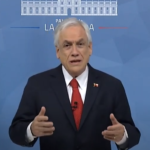 H.E. Sebastian Piñera, President of Chile
H.E. Sebastian Piñera, President of Chile
(English translation)
‘The Multidimensional Poverty Index is a fundamental tool to be able to identify the households that live in poverty. Also, it is useful because the deprivations that affect one of the members of each family also affect the entire family.’
‘It is important to measure, but not only to measure, we also have to act to face poverty in a multidimensional way.’
‘The Multidimensional Poverty Index has also allowed us to monitor the difficulties faced by the most overcrowded households, in order to maintain the physical and social distancing measures that are so much required to combat the coronavirus pandemic and to protect the health of all families.’
‘The measurement of multidimensional poverty enables the development of more focused, effective, and timely public policies to address the deprivations experienced by families that require it. An accurate and timely diagnosis of these deprivations is absolutely essential to be able to face with the best tools and in the opportune times the effects that this health emergency and this global recession is causing in the lives of so many families.’
…
 H.E. Imran Khan, Prime Minister of Pakistan
H.E. Imran Khan, Prime Minister of Pakistan
‘Poverty is the worst and most pervasive violation of human rights.’
‘The COVID virus does not discriminate; but it is the poor and vulnerable who have suffered the most from the health and economic effects of the pandemic.’
‘My Government is implementing a multisectoral poverty alleviation programme – Ehsaas (which means “compassion” in Urdu). It is the largest poverty eradication programme in Pakistan’s history. We have also stimulated the construction and agricultural sectors to create jobs and incomes and revive growth. My Government is committed to reducing poverty from 24.3 per cent to 19 per cent by 2023.’
‘The richer countries have mobilized $11 trillion to recover from the COVID crisis. The developing countries have not been able to find even a small fraction of the $2.5 trillion they need.’
‘Apart from the direct attack on poverty, we need to address the systemic causes of poverty. At the national and international levels, the structures of finance, production and trade must be made fair and equitable.’
…
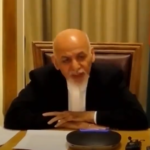 H.E. Ashraf Ghani, President of Afghanistan
H.E. Ashraf Ghani, President of Afghanistan
‘The COVID-19 pandemic is a hyper event, an event so disruptive that it marks a rupture in global, local and national history between the past and the future.’
‘The pandemic also challenged all of us in positions of leadership around the globe to be better leaders. It forced us to rethink how we lead, to be more effective, more efficient leaders. It forced us to listen better and act quicker.’
‘The Presidency is also a listening post – provided the one holding office learns the art of listening and makes a discipline of systematic and appreciative engagement and learning. This listening post became the locus of data, experience and expectations that informed our COVID response.’
‘Poverty is multidimensional…it certainly did not start with COVID…forty years of conflict have produced constant poverty.’
‘MPI’s utility lies in both providing a solid basis for policy formation and monitoring of policy implementation. We have therefore decided that our National Statistic Information Authority should use and update it regularly.’
…
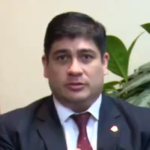 H.E. Carlos Alvarado Quesada, President of Costa Rica
H.E. Carlos Alvarado Quesada, President of Costa Rica
‘Before 2015 we were only using poverty from the income perspective. But with MPI the difference is that you are not only attacking income. You are going to the roots of the problem.’
‘One key element is how we budget in order to address poverty. If we get to see the different dimensions of how it is affecting citizens throughout the country, the difference between regions, in the impacts of the multidimensional indicators, we can budget properly depending on what we want to change…But also, this provides a tool to see and to monitor the impacts of public policy so we move the needle to eradicate poverty.’
‘Ever since we developed that Index, we measure poverty by income and by multidimensionality…both co-exist and we address better our battle against poverty. Ever since we implemented [it], multidimensional poverty in Costa Rica has reduced in almost five percentage points. That means we have decreased multidimensional poverty. But at the same time, income poverty remains the same and that gave us the insight to understand one of the key problems is in the labour market and that links directly to education and inequality in education. So those insights directly provide you with your tools to readjust quickly the public policy and to see it in a more comprehensive way, and act.’
…
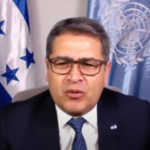 H.E. Juan Orlando Hernández, President of Honduras
H.E. Juan Orlando Hernández, President of Honduras
(English translation)
‘[Using the MPI to measure poverty] is a much more comprehensive and effective way, it is like working with a laser beam, focusing, identifying and attending.’
‘In 2015 we were one of the first countries to step forward to measure the poverty line through the Poverty and Human Development Initiative at the University of Oxford, to which I thank you again. Knowing and attacking the roots of poverty allowed us to reduce multidimensional poverty from 74.2% to 70.7% from 2013 to 2016. That is, around 170,000 Hondurans left their condition as poor.’
‘8 major lines of action. Citizen security, which to date has reduced the homicide rate by around 60%, a better life program, care for the poorest and most needy, improving conditions for all, the transformation of the health system that pandemic allows us to advance even further. We are going to create a more comprehensive health program and a field-to-table program.’
‘We organize a cabinet that I personally preside over, a cabinet for attention to the issue of poverty. There we have 17 factors to follow up.’
…
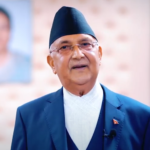 H.E. KP Sharma Oli, Prime Minister of Nepal
H.E. KP Sharma Oli, Prime Minister of Nepal
‘Considering poverty as a multidimensional phenomenon we have considered both the monetary and non-monetary aspects of poverty in our national development strategy. In partnership with OPHI, Nepal published [the] first Multidimensional Poverty Index (MPI) in 2018. The report identified that the incidence of multidimensional poverty in Nepal has declined by half from 59% in 2006 to 29% in 2014. The two indicators, nutrition and schooling, in which we were lagging behind have received renewed priority. Nepal will release [an] updated second report of national MPI within this year reflecting the status as of 2018–19. By aligning with the SDGs we have set a target of reducing MPI to 11.5% by the end of 2024…The 12th round of the decennial population census in 2021 will add significant value in this process.’
‘In a country of diverse geographical, social, economic and cultural conditions like Nepal we must generate MPI at a much disaggregated level so that resources could be judicially allocated to reduce inequality and meet our aspiration of “Prosperous Nepal, Happy Nepali” along with eliminating all kinds of inequality.’
…
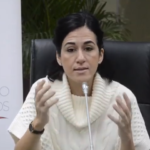 H.E. María Alejandra Muñoz, Vice President of Ecuador
H.E. María Alejandra Muñoz, Vice President of Ecuador
(English translation)
‘Inequalities begin early in life and grow larger during childhood and adolescence, giving children of different origins opportunities to grow and develop, to take advantage of public and private opportunities.’
‘Undoubtedly, the multidimensional poverty index and its four dimensions: health, education, work and habitat is a tool that allows better targeting efforts to slow down the damage and to sustain protection for those who have less access.’
‘The COVID-19 crisis will be profound and will leave many scars, the opportunity is unimaginable to refocus and lead more and better mechanisms to fight inequality and poverty in our society.’
…
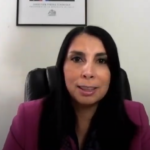 H.E. Karla Rubilar, Minister Social Development and Families, Chile
H.E. Karla Rubilar, Minister Social Development and Families, Chile
(English translation)
‘The multidimensional poverty measures developed in recent decades and recently adopted by some countries at the level of their official statistics constitute a fundamental support for the diagnosis, monitoring and evaluation of the effectiveness of policies.’
‘In the case of Chile, since the beginning of 2015 there are official measurements of the magnitude of multidimensional poverty in the country, as well as its specific incidence at the level of population groups and territories. For this to be possible, a broad technical consensus was required and the close collaboration of academia, different ministries and public services, as well as civil society.’
‘In 2018 Compromiso País … brought together the private sector, public sector, academia and civil society to work on concrete measures that contribute to overcoming lack of opportunities and breaking the circle of poverty in its different dimensions.’
‘The Multidimensional Poverty Index (MPI) becomes a fundamental tool when building profiles of households in poverty, highlighting the interaction that occurs in multiple dimensions and how the deficiencies that specifically affect to some members of the household they affect the situation of the household as a whole. For example, as a result of the crisis, in the same household there can be the loss of employment of adults, the exclusion of children and adolescents from the school system and overcrowding, situations that can reinforce other basic structural deficiencies that the household had before (such as lack of schooling, an informal job placement, or living in an unsafe neighborhood).’
…
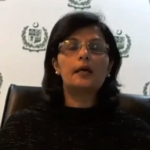 H.E. Sania Nishtar, Minister of Poverty Alleviation, Pakistan
H.E. Sania Nishtar, Minister of Poverty Alleviation, Pakistan
‘Even before the pandemic, our government had invested heavily in fighting both monetary as well as multidimensional poverty. Our government had set up the largest social protection programme in the history of the country.’
‘Our experience with Ehsaas, has taught us that it is possible to make quantum changes in the delivery capability of governments, but in order for that to happen, bold policy, good data, and an unwavering commitment to integrity, transparency in delivery, and whole of government mobilization is a pre-requisite – and that has been the cornerstone of our poverty alleviation work.
I genuinely believe COVID-19 has created an inflection point. Today we have the power to make decisions to reverse decades of neglect and sparse progress and to provide social protection to the 4 million people that lack it. And it is here that the metrics such as the MPI will help tremendously in helping to shape public policy in the right direction.
‘We now have a one in a generation chance to build a fairer world that ends poverty, inequality and the climate crisis. Let’s not waste this chance.’
…
 Mr. Luis Felipe López-Calva, Assistant Administrator and Regional Director for Latin America and the Caribbean, UNDP
Mr. Luis Felipe López-Calva, Assistant Administrator and Regional Director for Latin America and the Caribbean, UNDP
‘The recently launched Multidimensional Poverty Index 2020, which is a collaboration between UNDP and OPHI, includes also Covid projections, and estimates that the pandemic could wipe out up to 10 years of progress in terms of poverty reduction.’
‘Clear and timely data are also necessary. Many countries are now finding innovative ways to generate real time data on the impact of the pandemic. One example is a recent representative survey in Chile, which shows that the impact of the pandemic is cross-cutting and affects households at all income levels and manifests the various dimensions of well-being.’
‘The Multidimensional Poverty Index can also be an important instrument to coordinate, target and design policy responses to the crisis. In the context of Covid, identifying and locating those who are most vulnerable to falling into poverty, represents an important challenge. It can also be a mechanism to identify beneficiaries of social programs such as in the case of Costa Rica that was mentioned by the President earlier.’
‘The Covid crisis is fundamentally a systemic crisis that has stressed health, education, social protection, labour market, and fiscal systems simultaneously. It is thus a crisis of governance. In this context, it is critical that the process for designing, implementing and evaluating policy responses are done with the highest standards of transparency and accountability.’
…
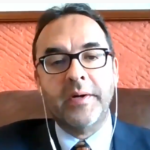 Gonzalo Hernández Licona, Director, Multidimensional Poverty Peer Network, MPPN
Gonzalo Hernández Licona, Director, Multidimensional Poverty Peer Network, MPPN
‘The event is a good example of how can we move together forward, how can we build back better, and this is by exchanging ideas openly.’
‘We started in 2013 when the network was launched together with Professor Amartya Sen [and former President Santos].’
‘Now we have 60 countries in the network and 20 international institutions. And this enthusiasm jumps into the UN, and now we have a target 1.2 of the SDGs’
‘In the case of Chile, we missed our annual event of the network this year. But, we are planning to have it next year and we invite you to join the Multidimensional Poverty Peer Network, and be with us in Chile next year.’
…
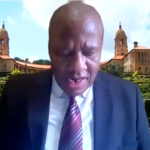 H.E. Jackson Mthembu, Minister in the Presidency, South Africa
H.E. Jackson Mthembu, Minister in the Presidency, South Africa
‘South Africa has experienced a vital role that data plays in informing plans and decisions towards addressing the manifestations of this pandemic. Our National Statistics Office – Statistics South Africa – promptly conducted rapid online surveys to provide insights about the impact of Covid-19 on the economy and social wellbeing of households in the country.’
‘The South African Multidimensional Poverty Index, that we call SAMPI, played a vital role in identifying areas where interventions are to be directed. Working with National Statistics Office provincial offices, we are able to profile districts, municipalities and communities, to identify areas of need… We have used the SAMPI to inform our provincial growth development frameworks, provincial poverty eradication masterplans, and provincial special development frameworks, and the integrated development plans at local government levels. We have seen that SAMPI [can be] used to better understand communicable dieses such as tuberculosis, which has strong correlates with poverty.’
‘Targeting efforts to expand the child support grant, which is one of South Africa’s most successful social protection instruments for addressing childhood poverty, utilise the SAMPI to confirm if the targeting measures were reaching the intended groups.’
‘Civil society organisations have used the data to contribute to our government’s calls for development, especially on matters of addressing issues of poverty. The ability of the SAMPI to provide information at multiple levels of geography is catered to galvanizing responses from society at large.…multidimensional poverty data to be specific, can help change lives.’
‘Currently South Africa is planning for the next population census to be conducted in 2021. This very important undertaking will avail fresh data on multidimensional poverty in South Africa, to ask policy makers for a better understanding of the poverty situation, better planning, more accurate targeting and most useful for poverty reduction strategy development.’
…
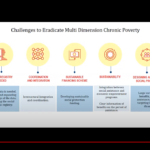 H.E. Suharso Monoarfa, Minister of National Development & Planning, Indonesia
H.E. Suharso Monoarfa, Minister of National Development & Planning, Indonesia
‘We are pleased to report that Indonesia has reached single digit poverty in 2018. This motivates us to achieve zero chronic poverty in 2024, five years earlier than our SDGs target. Alleviating chronic poverty needs a comprehensive method. We have used a multidimensional approach to sharpen our policies to aim at this goal, including expanding access to health, education, and economic opportunities. All of these efforts have shown significant impacts on poverty reduction. A collaborative work is the key strategy in managing a multidimensional approach.’
‘More inclusive data is a vital pillar to reduce the chronic poor. The integration of anti-poverty programmes is the next priority. By integrating social assistances and basic services provision, we address the multi-dimensional poverty issues.
Low living standards as well as limited access to health, education, and financial services, can trap the poor in a cycle of inter-generational poverty. These non-monetary dimensions of poverty, if left unaddressed, will prolong and preserve poverty.’
‘…with 34 provinces in over 17,000 islands, we are aware that our success relies heavily on the effective implementation of poverty reduction programs at the sub-national level.’
…
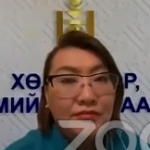 H.E. Ariunzaya Ayush, Minister of Labor and Social Protection, Mongolia
H.E. Ariunzaya Ayush, Minister of Labor and Social Protection, Mongolia
‘In Mongolia, we have worked with the Asian Development Bank to develop a pilot National MPI with 18 indicators across five dimensions. These are just the first steps. We now must work with more recent data to develop a final measure and launch it with a robust communications strategy to promote it in policy use and sustainability.
The initial findings from the pilot MPI suggested the importance of the interlinkages…more than two-fifths of people in the country were deprived in Mongolia in four or more of the indicators. This implies the need for coordinated action across the government – health, education, even the ministry of construction and other ministries – to better reach poor populations with joined-up policies.
Last year, Mongolia submitted a Voluntary National Review at the High-Level Political Forum, reporting that 10% of the population were living in multidimensional poverty using the global MPI produced by OPHI and UNDP. The 2020 global MPI release showed that this represents a decrease from the figures in 2010 and that Mongolia was on track to meet SDG target 1.2. It is critical to evaluate the progress that we are doing in the policies, how the policies are met, that this progress be maintained, even as the pandemic threatens to undo it.’
…
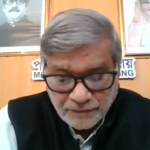 H.E. M. A. Mannan, Minister of Planning, Bangladesh
H.E. M. A. Mannan, Minister of Planning, Bangladesh
‘In Bangladesh, we are about to finalise and launch a National MPI.’
‘Our National MPI will be an alternative official statistic of poverty measurement, and to the monetary measure of poverty. It provides a platform that shines a light on interconnections between problems in living standards, education, and health, in disaggregated detail.’
‘I see the National MPI as a powerful new tool for rationally planning and achieving the eradication of multidimensional poverty in Bangladesh. Strong and rigorous poverty focused measures provide vital information about the most vulnerable so that they can be protected from hardship and poverty. Our National MPI is designed to inform how we target areas and people who are especially vulnerable.
Poverty indeed is at a crossroads. The road map to poverty eradication has been rewritten by the pandemic. It has forced us to reconsider our plans and strategies. The MPI helps provide a tool in this regard. It shows what poverty looks like and suggests how policies can empower people to emerge from their miseries stronger and more resilient.’
…
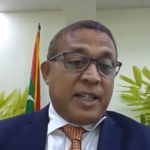 H.E Mohamed Aslam, Minister of National Planning, Housing and Infrastructure, Maldives
H.E Mohamed Aslam, Minister of National Planning, Housing and Infrastructure, Maldives
‘We launched our MPI in June, in the midst of COVID-19.’
‘We find this to be a relevant tool for a Small Island Developing State like Maldives.’
‘If we look at the poverty from just an income point of view, our poverty remains at about 8% of the population, but looking at things from a multidimensional point of view it’s about 3.6 times more than that.’
‘I’m an Earth Scientist and from my academic background in Earth Science, forces that are destructive also give opportunities for new creations. So, I believe that the pandemic that we all experience right now will show us opportunities for us to do things better and look at things from a different point of view.’
…
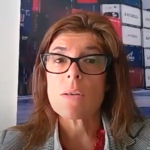 H.E. Ángeles Moreno Bau, Secretary of State for International Cooperation, Spain
H.E. Ángeles Moreno Bau, Secretary of State for International Cooperation, Spain
(English translation)
‘The latest figures released in July 2020 by UNDP and the Oxford Poverty and Human Development Initiative for the global Multidimensional Poverty Index (MPI), showed that before the Covid-19 pandemic occurred, progress was being made in the fight against multidimensional poverty. 65 of the 75 countries studied significantly reduced their multidimensional poverty levels between 2000 and 2019. These pre-pandemic data were a message of hope. But now this progress is in jeopardy.’
‘Simulations in 70 developing world countries, based on the expected effects of the virus on just two components of the global Multidimensional Poverty Index (MPI) – nutrition and school attendance –reveal the magnitude of the impact that the crisis could have if we do not remedy.’ ‘In Latin American and Caribbean, approximately one out of ten children lives in a household in acute multidimensional poverty.’
‘Spain was the first OECD country to join the Multidimensional Poverty Peer Network and from the Spanish Cooperation we make intensive use of multidimensional indices in the planning and execution of our actions. Therefore, we consider that the Multidimensional Poverty Index should be one of the key performance indicators of the 2030 Agenda and we are fully committed to its consolidation as the key indicator of SDG1.’
…
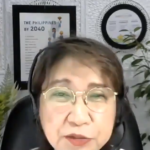 H.E. Rosemarie G. Edillon, Undersecretary, National Economic and Development Authority, Philippines
H.E. Rosemarie G. Edillon, Undersecretary, National Economic and Development Authority, Philippines
‘The Philippines Multidimensional Poverty Index consists of 13 indicators belonging to four dimensions: 1) education, 2) health and nutrition dimension, 3) housing, water, and sanitation and 4) employment. The education dimension, we found, has the largest share or contribution to overall deprivation at more than 36%. For this reason, our interventions have focused on increasing access to education at all levels. For poor families with members who are of school-age, government provides a regular cash transfer on the condition that the children go to school and undergo regular health checkup.
We also have regular programs covering the other dimensions. In addition, we have instituted structural reforms covering these, like the First 1000 Days Act, Supplementary Feeding Act. Universal Health Care, Expanded Maternity Leave Act and others covering the other dimensions to ensure that the gains will be robust. And we have been achieving significant gains, before COVID.’
‘The COVID-19 pandemic, however, has demonstrated the need to include another dimension, which is resilience. And we hope that the research community, led by Dr. Sabina will provide more guidance. What would be the relevant indicators of resilience? How do we incorporate these? Should these be added as just another dimension? Or do we need to include these indicators of vulnerability in each dimension?’
‘And as we build back better, we need to be ready for the next shock.’
‘Overall, we still believe that well-being is multi-dimensional and we will continue to use MPI…we do hope that resilience should be deliberately considered in the definition and measure as well.’
…
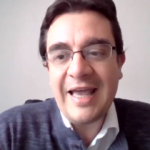 H.E. Daniel Gómez Gaviria, Subdirector, Department of National Planning, Colombia (English translation)
H.E. Daniel Gómez Gaviria, Subdirector, Department of National Planning, Colombia (English translation)
‘In Colombia we created the Table of Equity, which is a high-level instance led by the President of the Republic to establish guidelines for sectors and entities of the national government. The table approves designs, approves actions, and programs to address each of the critical issues of the Multidimensional Poverty Index. This space also serves to not only align the general policy to combat poverty for equity, but also allows us to have a space for monitoring actions.
In the framework of COVID, this Table of Equity has been fundamental. At the Table of Equity since the pandemic began, we have been able to monitor the Multidimensional Poverty Index of Colombia, using simulations to understand what the impact of this emergency would be in the different dimensions. In addition, we analyzed the impact of monetary poverty at the Table of Equity. It is very important to note that, in Colombia in 2010 we began to calculate the Multidimensional Poverty Index. Between 2010 and 2019, the poverty index has been reduced by 12.9 percentage points from 30.4 to 17.5%. In the context of the emergency, we have seen that monetary poverty could rise between 4 and 10 percentage points, and some estimates indicate more. In Colombia, monetary poverty was at 27% last year.
The range of estimates indicates that it could go up to 40%. But in the Multidimensional Poverty Index, the impact will be mainly in urban areas and not so much in rural areas, despite the fact that the MPI is higher in levels in rural areas. But these initial analyses indicated that at the national level the MPI could rise 1 percentage point in 2020 due to the effects of the economic slowdown induced by the pandemic.’
‘In Colombia, the MPI is also formulated by a committee of experts, thus having an institutional framework and a governance that guarantees the independence of the calculation of the index. Then the executing entities and ministries use that result to formulate policies that we now articulate in the Table of Equity. The MPI is a great tool that in Colombia we have fully incorporated into the monitoring of our public policies and of course in the Sustainable Development Goals and in the 2030 Agenda, which in turn are embedded in the National Development Plan.’
 Cecilia Scharp, Assistant Director General, Swedish International Development Cooperation Agency
Cecilia Scharp, Assistant Director General, Swedish International Development Cooperation Agency
‘The members and leaders of the MPPN have today demonstrated their leadership and commitment to work with multidimensional poverty, share knowledge and experience and prioritise interventions benefiting the poor, the people living in poverty.’
‘…we are proud to be part of this Network, and to financially support the work of the Network through OPHI. His Excellency President Ghani was telling us about his experience from using the MPI in Afghanistan, and in SIDA’s multidimensional poverty analysis, we have been relying on National MPI data from Afghanistan for our own understanding of poverty in the country, then, which we used in planning and implementing our own bilateral development cooperation.’
‘During the past month SIDA has adapted its support to respond to the crisis. This has implied sharpened emphasis on the poorest, identifying those at risk falling back into poverty, and allowing our partners to flexibly adjust their programmes to respond to those most urgent needs. The current crisis has emphasised how rapidly the levels of poverty can rise, if we don’t recognise the overlapping and interlinked dimensions of poverty. This highlights the importance of the work that OPHI and the members are doing continuously to advance our understanding of poverty. And I believe that all our previous work has prepared us better, to understand the challenges that we are actually facing now.’
…
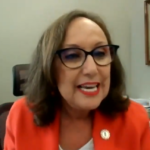 Ms. Rebeca Grynspan, Ibero-American Secretary-General (English translation)
Ms. Rebeca Grynspan, Ibero-American Secretary-General (English translation)
‘The work you have done with this index is one of the most important and the greatest progress when it comes to human development and public policy targeted towards combating inequality and poverty. Poverty is a complex issue… It is it something dynamic, changing, and the MPI captures in a greater way this complexity, and takes us out of the description of a photograph to be able to look at a film, to look at a reality in evolution.’
‘we call on national and international organisations and the countries themselves to unite to the MPI network.’
‘32 million children have been excluded from the schooling system in Latin America and we expect school desertion rates that will keep going up. If we don’t deal with this with urgency, the multidimensional poverty will go up greatly in the region, in spite of the efforts that countries are making. And this will have permanent effect in the lives of these families if we don’t move fast.’
…
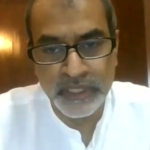 Sanjay Wijesekera, Director of Programmes, Unicef
Sanjay Wijesekera, Director of Programmes, Unicef
‘For well over a decade now, UNICEF has been working with governments to establish multidimensional child poverty measures.’
‘Children suffer poverty differently from adults, their needs are different. Child poverty is a denial of their fundamental rights to education, health, nutrition, water and sanitation, protection and shelter – diminishing their life chances and ability to realise their potential. The global Multidimensional Poverty Index underlines the challenge, showing that children are twice as likely to live in multidimensionally poor households as adults.’
‘With COVID-19, the challenges for children are growing, with UNICEF and Save the Children estimating that 150 million additional children have fallen into multidimensional poverty due to the current crisis.’
‘…we would like to highlight our appreciation of governments who are leading the way in measuring and responding to child poverty in all its dimensions.’
…
 Jamie Coats, President, SOPHIA
Jamie Coats, President, SOPHIA
‘Poverty reduction is not just at a crossroads, but as a consequence of the pandemic at a hole in the road that governments alone cannot fill.’
‘This call for leadership must go beyond governments and include private sector leaders by asking them to look inside their own companies.’
‘The private sector is being vocal that it wants to help. The private sector loves good data to better target limited resources for measurable the impact. That is what Multidimensional Poverty Indices do. We need the private sector to join governments on the same MPI page.
For this reason, we are launching a trial in Latin America in next few months to equip businesses to measure and analyze the challenges and deprivations affecting their employees and their families, to inform programs and strategies to increase their wellbeing.’
‘In order to fill that hole in the road and get on an even better track to deliver the SDGs, public-private partnerships are essential. Getting businesses using the MPI, the business MPI, is a powerful way to wisely align efforts and channel the increasing calls for transformed business models to achieve a sustainable and inclusive development.’















